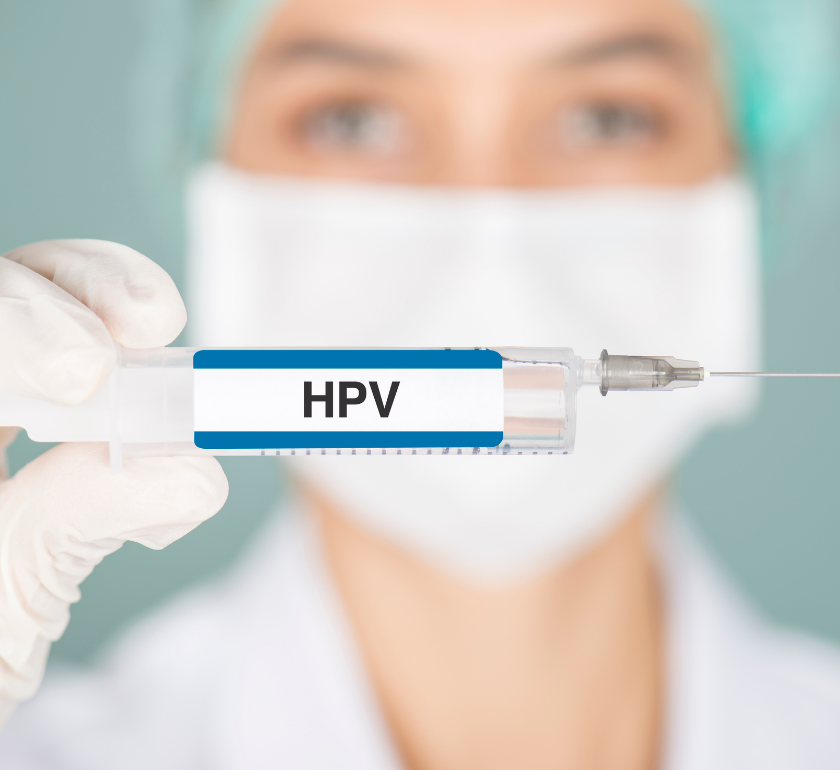Have you experienced an abnormal pap smear? If not, having one can be a terrifying experience. And, while an abnormal pap smear is severe and should be treated as such, the reality is only a tiny percentage of them are caused by cervical cancer. In many cases, benign underlying factors contribute to an abnormal pap. Yet, we’re taught little about these less severe complications.
Page Contents
An Abnormal Pap Smear Is Quite Common
You may or may not know this, but an abnormal pap smear is quite common. According to Rosewell Park Comprehensive Cancer Center, an estimated 5% of pap smear tests will be abnormal, and less than 1% of these tests result in cervical cancer.
Common causes for an abnormal pap smear are a lab error or failure on the patients’ part to adhere to pre-appointment protocols. In addition, forgetting to refrain from sexual activity, tampon usage, douching, using scented feminine care products are known to compromise the sample.
Make sure you’re’ following pre-appointment guidelines. For example, you are abstaining from sexual activity two days before your appointment, avoiding taking a bath before the examination, and discontinuing the use of known vaginal irritants such as fragranced feminine care products or douching.
Additionally, if you’re about to start your period or currently on your period receiving a pap smear may increase the likelihood of a negative result. Speak with your doctor and consider rescheduling your pap two weeks before your period or a few days after.
If one of the reasons listed above causes abnormal pap results, a secondary pap smear is recommended. Once the results come back positive, you’re in the clear.
Benign Causes of An Abnormal Pap Smear
In addition to lab errors and pre-appointment slip-ups, it’s possible to have an abnormal pap smear caused by a benign, non-threatening reason.
You Have A Vaginal Infection
Vaginal infections can influence the integrity of cervical cells at the time of your appointment, thus causing an abnormal pap smear. Two common vaginal infections are yeast infections and bacterial infections.
Yeast infections occur when there’s an overproduction of Candida. Although Candida is present within the vaginal flora, pH imbalances can cause overgrowth. If you’re experiencing a yeast infection, you may notice symptoms such as vaginal itching, swelling, and redness. Additionally, you may also feel a painful, burning sensation in the vagina.
Cottage cheese or yellowish discharge may be present when you wipe after urinating or seen in your underwear. Lastly, you may find that sexual intercourse becomes painful and uncomfortable. If a yeast infection is a reason for your negative test, you can treat it using antifungal medications prescribed by your doctor or purchased at your local pharmacy.
Bacterial infections, commonly called bacterial vaginosis, are an overgrowth of harmful bacteria in the vaginal flora. Typically the vaginal microbiome can maintain a healthy balance of bacteria. However, when vaginal irritants disturb pH, an opportunity for bacteria to thrive is created. Bacterial infections can be caused by fragranced feminine care products, douching, and sexual intercourse. Symptoms to be aware of include having thin, grayish vaginal discharge, vaginal itching, and a foul fishy odor.
Similar to yeast infections, a bacterial infection is treatable. Typically, your doctor will prescribe antibiotics to clear the harmful bacteria from the vaginal flora. However, it’s important to note that many antibiotics can increase the risk of a yeast infection. Taking probiotics and consuming probiotic-rich food allows healthy bacteria to repopulate the vaginal flora, preventing bacteria and yeast’s overgrowth.
You’re Experiencing Inflammation
Believe it or not, the cervix can become inflamed, causing a change in cervical cells leading to an abnormal pap smear. There are a couple of issues that can trigger inflammation.
Hyperkeratosis
Hyperkeratosis is widely associated with skin inflammation, but it can occur on the cervix and lead to a negative Pap smear. In addition, it causes dried skin cells on the surface of the cervix and may indicate infection. Primarily hyperkeratosis occurs with the usage of a diaphragm or cervical cap.
Experiencing the above condition does not always mean further evaluation is required. However, your doctor may decide a 6-month follow-up is appropriate. On the other hand, a colposcopy may be performed if these dried skin cells are still present at your follow-up appointment.
A colposcopy allows the doctor to visually examine the cervix, vagina, and vulva using a particular instrument known as a colposcope. Consequently, undergoing such a procedure aids in determining the presence of an underlying factor causing hyperkeratosis to persist.
Atypical Squamous Cells of Undetermined Significance
Atypical Squamous Cells of Undetermined Significance, or ASCUS for short, is standard for many women. In most cases, it indicates an infection such as a yeast or vaginal infection. However, it can also identify certain infectious types of human papillomavirus (HPV).
Additionally, low estrogen levels attributed to menopause can also trigger an inflammatory response. Another potential cause includes a benign noncancerous growth known as a cyst or polyp.
Your doctor may recommend follow-ups and additional testing. These tests include a cervical biopsy, endocervical sampling exam, or colposcopy. It’s important to note that ASCUS isn’t an indication of precancerous cells and doesn’t mean you have cervical cancer. It is treatable and can quickly resolve. However, if it goes undiagnosed and untreated, there is a 10% risk of cervical cancer. So, prioritize having a pap smear regularly.
Abnormal Pap Smear Results To Take Note Of
As discussed before, abnormal pap smears are not uncommon and occur often. However, there are instances that negative results indicate serious complications.
You Test Positive for HPV
The Human Papilloma Virus, known as HPV, is a sexually transmitted infection (STI). According to the Centers for Disease Control (CDC), it’s a common STI, especially for those in their late teens and early 20s. HPV can cause genital warts and increase the risk of cervical cancer.
For most patients, the immune system is sufficient to fight off the virus and resolve itself. However, for those with a weakened immune system overcoming HPV may not be easy to achieve. Therefore, if your gynecologist informs you that you test positive for HPV, additional testing is often required.
They may recommend administering one of the tests I mentioned earlier, or they may decide to perform a 6-month follow-up exam. And, in some scenarios, they may recommend both of these actions. Either way, work closely with your doctor to ensure the best treatment.
Your Have Cervical Dysplasia
Cervical dysplasia is a precancerous condition commonly caused by HPV. There are different classes of cervical dysplasia known as mild, moderate, or severe dysplasia. Mild cases of cervical dysplasia usually resolve without treatment. Typically, monitoring and observation via a pap test administered every 3-6 months are advised.
On the other hand, treatment is highly encouraged if mild dysplasia doesn’t resolve after two years. Furthermore, moderate to severe cases of dysplasia will require treatment. Undergoing treatment decreases cervical cancer risk. And when detected and treated, early recovery is possible. However, late detection and delayed treatment can increase the risk of cervical cancer. Your gynecologist will suggest the preferred treatment plan for your unique case.
You Test Positive for Cervical Cancer
If you test positive for cervical cancer, your gynecologist should refer you to a gynecologic oncologist for proper testing and treatment. A gynecologic oncologist specializes in diagnosing and treating cancer affecting women’s reproductive organs.
The tests they administer will confirm the diagnosis and determine the type and stage of cancer you have. While they may use some of the testing methods discussed earlier, there are specific tests they typically require. One such test is the punch biopsy which entails pinching small cervical tissue samples for examination.
Another test known as the endocervical curettage involves scraping a tissue sample from the cervix known for further testing. Additionally, magnetic resonance imaging (MRI), computed tomography (CT scan), or positron emission tomography (PET scan) are imaging tests that aid in determining if cancer has metastasized and spread to other areas. When it comes to diagnosing and treating cervical cancer properly, these tests are vital.
The Importance of Pap Smears
I know firsthand that abnormal pap smears are not fun. I had one when I was in my early 20’s and was diagnosed with HPV. It was scary and upsetting, but thankfully my immune system overcame it, and it cleared up within six months. Nevertheless, this experience revealed the importance of regular pap smears and their role in curtailing cervical cancer via pre-screening and early detection.
However, their importance isn’t exclusive to HPV detection and cervical cancer prevention. For example, they identify vaginal infections and inflammatory conditions that are treated with the appropriate medication. In addition, prioritizing proper education about abnormal pap smears and their impact on gynecological health can increase awareness about the essential steps that address negative test results by treating the underlying cause.










